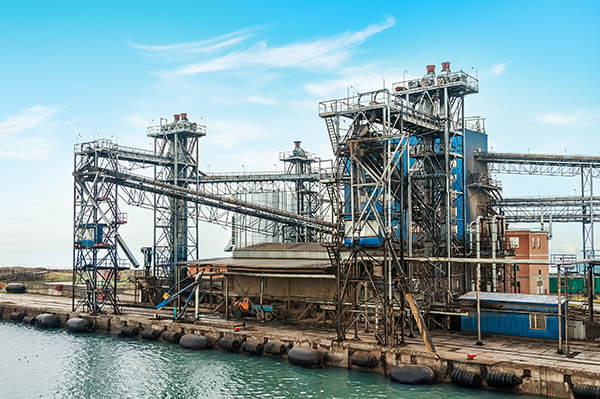As we get closer to full-blown winter weather, the main sources of health and safety, asset management, and preventative maintenance become that much more pronounced.
In the mining, transportation, heavy equipment, and oil and gas industries, missteps and violated standards are especially more susceptible to issues. Inspections and control during times of fluctuating, often extreme weather are an absolute must.
Let’s talk about some holiday workplace safety in our most high-risk industries during the most high-risk time of year.
Mining
From air condition issues such as coal dust and methane to freezing and slippery walls and roads, mining is a field where the weather affects the outside differently than the underground. These conditions make asset management and maintenance especially key. Expanding and contracting product and equipment fluctuating with cold drops must be kept on top of. Often, colder weather brings a higher risk of explosions. According to the Mine Safety and Health Administration (MSHA), mine examinations in the winter months are stressed as the first line of defense against life-threatening threats and high fines.
For workers, MSHA outlined some winter-safety steps to take:
- Monitor your physical condition and that of your co-workers
- Wear several layers of clothing for insulation
- Protect your ears, face, hands, and feet in extremely cold or wet weather
- Include chemical hot packs in your first aid kits
- Avoid touching cold metal surfaces with bare skin
- Maintain adequate hydration and nutritional requirements
Transportation
As usual this time of year, the main safety issue facing the transportation industry is road safety and tire security. Transport Canada touts getting vehicles ready for the winter months ahead before the snow has a chance of hitting, so preparations and safety should start early. Slip and fall injuries in workers are some of the most prevalent, contributing to lost productivity and company loss. Proper training and equipment are a must.
Some of the most common winter health issues transportation industry workers face are frostbite, chilblains, hypothermia, and respiratory inflammation.
The American Trucking Association has laid out some tips to take into account this winter season:
- Never miss a walkaround: a thorough inspection of the vehicle must be done to minimize risk and accidents based on unchecked or delayed hardware issues.
- Avoid extreme conditions whenever possible. Use route mapping and weather forecasting tools when storms approach.
- Remove accumulations of snow and ice from vehicles and facilities in order to minimize slips and fall hazards, and to ensure high visibility on the road.
- Prepare driver emergency kits. Always have salt or sand, shovels, warm clothing, and non-perishable food/water supplies.
- Pull over and remain with the vehicle if conditions are deemed dangerous. Drivers must be comfortable enough to use their own judgment – on-time deliveries aren’t worth the risk and damage.
- Adjust travel schedules to maximize daylight and to reduce delays associated with winter weather. Leave early to minimize the stress associated with tight delivery schedules.
- Increase the distance between vehicles on the road and slow down when traveling, allowing for more time to react to worsening driving conditions. On slick roads, distances may need to be doubled or even tripled and speed decreased accordingly.

Oil and Gas
With a fatality rate seven times greater than other industries, as reported by OSHA, the importance of safety and checks in oil and gas, including oil rigs, is never greater than in the winter months.
In cold, freezing temperatures, slips and falls, and moving or falling assets may result in serious injury or getting caught between dangerous equipment or in places where asphyxiation is a risk. This safety issue, already prevalent in the industry, is magnified in the winter months. Perhaps surprisingly, vehicle accidents amount to a lot of reported safety issues, as moving between pipelines and locations in uncertain, remote, often dangerous territory is part of the job.
Examining equipment for potential explosion and fire hazards is one of the most important checks. Wearing protective clothing and having the tools to deal with an emergency on hand is also key. All in all, working in remote locations is part of the job, but in Canada, that often means areas with varying levels of extreme weather.
Heavy equipment
For engineers and heavy equipment operators, the dangers of working with megaton equipment are always present. Missed safety checks and small violations, however, can lead to serious issues in the winter months.
With slippery roads and heightened danger in construction sites, buildings, and other areas of work, everything from protective gear to outfitted vehicles and followed safety measures makes a difference.
The most common incidents in the heavy equipment industry are struck-by incidents (people getting hit by assets or vehicles), caught-in or in-between hazards (clothing or body parts being crushed or pinned in or between equipment), and contact hazards (being cut, lacerated, burnt or chemically burnt).
These safety risks can be mitigated by proper winter precautions such as risk assessment, equipment selection, equipment guards, elimination of hazards, education and training, and PPE.

Inspection Software to the Rescue
While we covered a few industries suffering the most from winter health and safety issues, the simple solution to any industry is proper inspections and a detailed analysis of health and safety violations that are available and accessible to every part of the team.
Field Eagle is dedicated to making your inspections easy, connected, and available in nanoseconds and with the latest laws and guidelines in your industry. Our asset and equipment maintenance management software is an award-winning solution to any issues you might face on or off the field. We have years of experience in high-risk industry inspections, and we know what safety and good inspection software can do for your company. Request a demo or try our 15-day free trial today.






